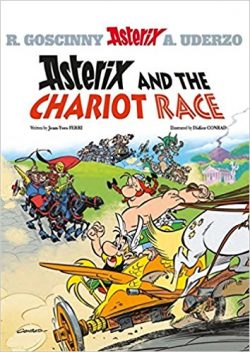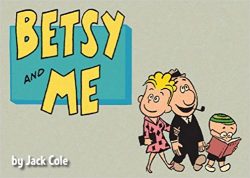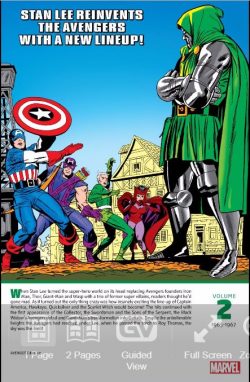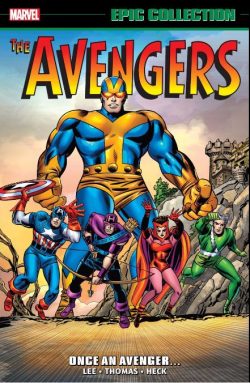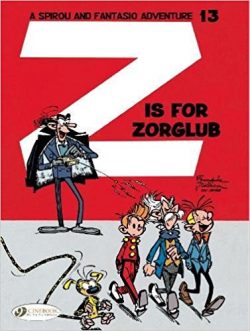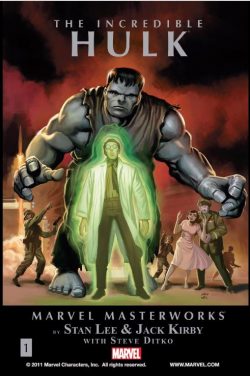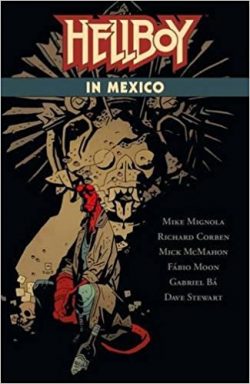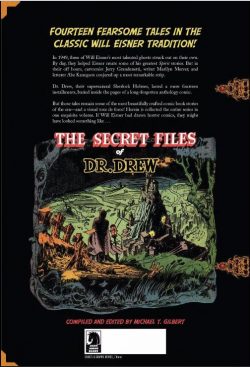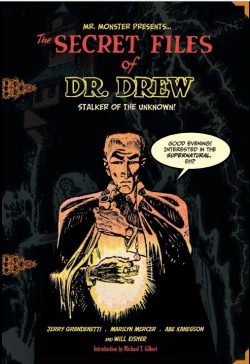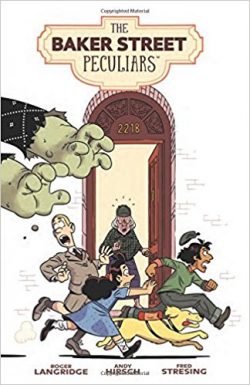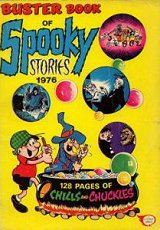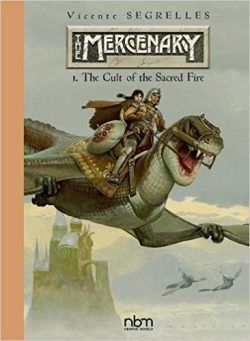
By Vicente Segrelles, translated by Mary McKee (NBM)
ISBN: 978-1-68112-124-6
Win’s Christmas Gift Recommendation: A Mythic Masterpiece Returns… 9/10
Born in Barcelona in 1940, Vicente Segrelles Sacristán is a renowned illustrator of magazines and book covers on three continents and the creator of one of the world’s most popular graphic novel series.
His first comics album ‘El Mercenario’ (The Mercenary) was released in 1982; the tale of an itinerant knight-for-hire fighting his way through a fantastic world of science and sorcery, often on the back of a flying dragon.
Rendered initially in lush oil-paints (before graduating to creating art digitally from 1998 onwards), the epic tales blend visual realism and accuracy with fable, myth, historical weaponry, contemporary technology and classical science fiction themes. All these fantastic scenes are screened through the visual lens of a natural architect and engineer. Fourteen albums were released between 1982 and 2003, most of them seen by English-language readers through the auspices of publisher NBM.
Hugely in demand for his painted covers since the 1970s, Segrelles has created book covers for the works of such authors as H, Rider Haggard, Poul Anderson, Roger Zelazny, Alistair McLean, Desmond Bagley, G. F. Unger, Andre Norton, Joel Rosenberg, Charles DeLint, C.H. Guenter, Jason Dark, Terry Pratchett and a host of others.
European prose readers may also know him as the cover artist of Italian science fiction magazine Urania.
The artist came to comics relatively late in his career and the reasons for that can be learned in a prodigious “behind-the-scenes†section at the back of this stunning hardcover (and eBook) remastered reissue entitled ‘Meet Vicente Segrelles’, relating his life and career and breaking down his working methodology. That includes how this volume and the Mercenary series came into being, augmented with a wealth of illustrations from the artist’s early days, discarded paintings and drawings plus many detail-shots taken from the story that precedes it.
Originally serialised in Spanish magazine Cimoc in 1980, El Mercenario was one of the earliest European series NBM published in English and to celebrate forty years in business the company have finally rereleased the series in fabulous oversized (314 x 236 mm) remastered hardcover albums to once more set the world alight. If you prefer, you could instead pick up a thoroughly modern digital edition.
What’s it about?: in the mediaeval world, a region of Central Asia lies all but undiscovered. The Land of Eternal Clouds is an isolate region where life has taken a different turn at the highest mountain levels. Here reptilian fliers dubbed dragons abound and the outposts of humanity have turned them into beasts of burden. This setting is the backdrop to introduce a nameless action hero and problem-solver who is engaged in this premier tome by the puissant potentate of one super-cumulus city-state to rescue his queen from vile abductors…
Riding a gigantic bat-winged lizard, The Mercenary plucks the unfortunate lady from peril and defeats the dragon-riding guards who give chase but only at great personal and financial cost…
Happily, the wary warrior has made prior contingency plans and – even after they go awry following a clash with a predatory beast – is smart enough to build a mechanical flyer to replace the ones he has lost to this ill-fated mission…
This initial yarn is actually a tryptic of three interrelated vignettes, and the second begins once the hero-for-hire returns the comely bride to her rich but old and flabby husband. Safely re-ensconced in the lap of luxury, she repays her dutiful saviour for spurning her amorous attentions by accusing him of assaulting her…
Although the Mercenary escapes to his hastily constructed contraption, it is not enough to keep him airborne and slowly he plunges into the swirling cloud mass from which no man has ever returned…
Crashing to earth he finds a whole new and undiscovered world, and an old sage with a handy potion that soothes his wounds and allows him to breathe better in air that cloys like soup. He soon returns the favour when the oldster shares his woes: the family have also suffered a recent kidnapping.
This time a young woman has been taken by a mystery group demanding as ransom all the alcohol the village contains…
Soon the tireless adventurer has broached the cage in which she hangs above certain death only to find himself also a captive: this time inside a colossal and all but invisible floating city ruled by mysterious cloaked figures claiming to be the Cult of the Sacred Fire…
Before long the doughty champion has discerned the incredible rational secret behind all the seemingly magical phenomena and set the city on a course of appalling destruction and personal vengeance…
To Be Continued…
Although sometimes considered a little static, Segrelles’ vibrant, classical realism set a benchmark for illustrative narrative that has inspired generations of artists and millions of readers. This landmark series is a long overdue and welcome returnee to our bookshelves and seems certain to garner a whole new legion of fans and admirers.
© 2015 Vicente Segrelles. English Translation © 2017 NBM for the English Translation.
For more information and other great reads see http://www.nbmpub.com/

